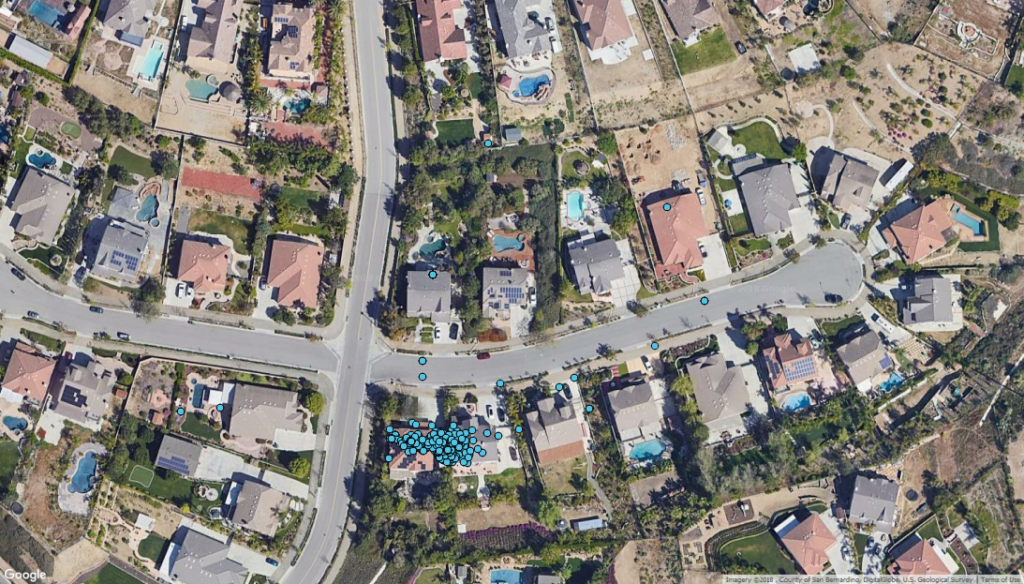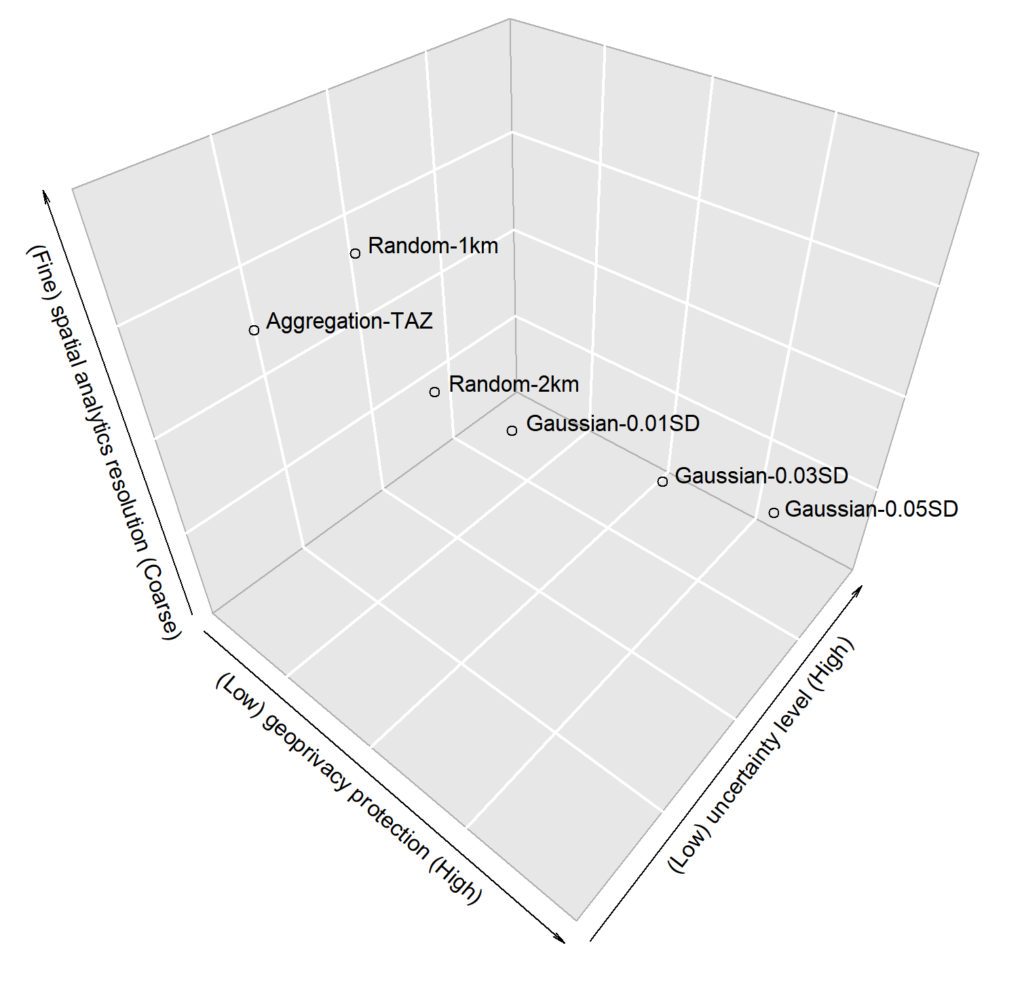
Reference: Song Gao, Jinmeng Rao, Xinyi Liu, Yuhao Kang, Qunying Huang, Joseph App. (2019) Exploring the effectiveness of geomasking techniques for protecting the geoprivacy of Twitter users. Journal of Spatial Information Science. 19, 105-129. DOI: 10.5311/JOSIS.2019.19.510 [PDF]
Abstract: With the ubiquitous use of location-based services, large-scale individual-level location data has been widely collected through location-awareness devices. Geoprivacy concerns arise on the issues of user identity de-anonymization and location exposure. In this work, we investigate the effectiveness of geomasking techniques for protecting the geoprivacy of active Twitter users who frequently share geotagged tweets in their home and work locations. By analyzing over 38,000 geotagged tweets of 93 active Twitter users in three U.S. cities (Los Angeles, Madison, and Washington D.C.), the two-dimensional Gaussian masking technique with proper standard deviation settings is found to be more effective to protect user’s location privacy while sacrificing geospatial analytical resolution than the random perturbation masking method and the aggregation on traffic analysis zones. Furthermore, a three-dimensional theoretical framework considering privacy, spatial analytics, and uncertainty factors simultaneously is proposed to assess geomasking techniques. Our research offers insights into geoprivacy concerns of social media users’ georeferenced data sharing for future development of location-based applications and services.



Broader Impacts: In fact, Twitter removes support for precise geotagging since June, 2019. However, the metadata of historical tweets prior to the policy change may still reveal precise GPS coordinates. In addition, when a user deletes a geotagged tweet , Twitter does not guarantee the information will be completely removed from all copies of the data on third-party applications or in external search results. Even if the precise GPS location is not available anymore, Twitter users are still able to add place tags (e.g., a city, office building, apartment, landmark, and many other types of places) to their geotagged tweets, which can be converted to the GPS coordinates (often using the centroid as a representation location). This is similar to the aforementioned aggregation-based masking approach, thus we may still be able to get users’ sensitive locations based on fine-scale place tags. People should be aware that sharing or publishing such kind of location data involve geoprivacy issues and the geomasking technique provides a way to help mitigate the problem not only for Twitter users but also for other telematics and social media platforms such as Facebook, Flickr, Weibo, and Instagram where geotagging or place-tagging is accessible, as well as for mobile applications that track individual locations.